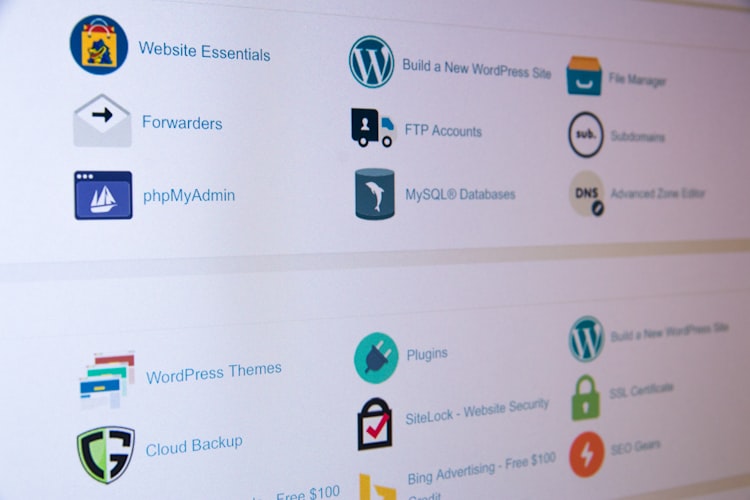
Properly Rebranding Your Website, Social Media Accounts, and More
Changes often take place not only outside, but also in the depths of the company’s internal business processes. Modern successful organisations are constantly improving and strive to keep up with the times. This creates new products and services.
Processes often require both internal and external renewal of companies. Most often this is noticeable by external changes since they immediately attract attention. However, a huge layer of work is hidden in the internal aspects.
What is rebranding
Rebranding is a set of actions taken to change part of the internal business processes and external perception of the brand by the target audience.
There is a common misconception that rebranding refers exclusively to the external visual components of the brand, such as the logo and corporate identity. But this is nothing more than a redesign.
Re-branding is also often confused with repositioning, assortment changes and planned brand evolution. In fact, rebranding can include all the above elements and most often implies not only external changes but also significant internal transformation. It may relate to the ideology, mission, values, structure and quality of the company’s business processes.
Rebranding can affect such areas as brand positioning and its philosophy, changing visual components and their presentation, creating new services.
Why is the rebranding necessary?
First of all, this process is necessary for solving new strategic tasks. For instance:
Radically change the range of goods or services;
Go to other product categories;
Change or significantly expand the target audience;
Use a fundamentally different approach to pricing;
Enter new markets;
Improve your reputation.
Also, virtually any brand must naturally evolve and develop, otherwise, it will be doomed. Starbucks is a good example – just look at the dynamics of their logo change.
In some cases, one can observe protracted rebranding races. Competing companies are actively competing for the audience’s attention in the media and advertising space, points of contact with the audience. When one of the competitors is noticeably updated, then the others also need to correspond to the changes in the market.
Mobile operators are a good example. They are constantly introducing new concepts. If earlier this happened more at the level of external visual solutions, such as logo, corporate identity and interior design of communication salons, now the range of changes affects the most unexpected elements of activity.
Reasons for rebranding
The market and competition are constantly changing, the target audience is maturing, its values and needs are being transformed, and the next generation is growing up. All these factors must be taken into account in strategic marketing planning, otherwise, the success of the brand will be temporary.
It is necessary to constantly monitor changes in audience preferences and respond to them in a timely manner.
When is rebranding needed and how to know when it’s time to do it
The vision of business development has changed significantly;
The reputation of the company has deteriorated significantly;
You need to switch and focus on working with other segments of the audience;
There has been a change of owners or management team who want to change the direction of their activities;
A merger or acquisition transaction has taken place;
The brand is morally outdated and does not correspond to modern market realities;
The company does not systematically fulfil the assigned tasks and does not achieve; necessary goals;
The target audience or its key consumer segments have changed;
Very serious competitors appeared on the market and the brand became non-competitive;
When starting a business, the wrong target audience was chosen, the main direction of the company’s activity was incorrectly determined, or the brand was initially built incorrectly;
Consumers have lost interest in a product or want a variety of choices;
From the very beginning, the company’s products were not in great demand in the market.
Types of rebranding
Depending on the tasks set, rebranding can be complex or partial.
Complex rebranding is a total change in a company or project. Often, rebranding goes so far that the new organisation is unrecognisable compared to the previous version. In this case, a ubiquitous transformation takes place: a new design, logo, style, rejection of low-margin products and services, an improvement in the assortment, and new corporate ethics. But usually, the main line of business of the company does not change, as its client audience.
For example, the management of a law firm changed the name, design, logo, redesigned the website and focused on civil matters, but did not give up legal activity. This is a complex rebranding.
Partial rebranding is a change in a separate part of the company. For example, updating the logo if it is associated with unpleasant emotions, incidents, images, or even resembles another large corporation. Or a redesign of a product’s packaging in order to increase its awareness and make it more noticeable, which means increase sales. In this case, a specific task or problem is solved.
Rebranding stages
Marketing audit
Includes an analysis of the current state of affairs in the company. Find and evaluate strengths and weaknesses against the background of competitors. Be sure to study the current customer base: loyalty and trust of consumers, the motives for choosing a company, their demographic characteristics.
They also assess the company’s slogans, logo, design – what associations they cause and how this affects the level of customer confidence.
In addition, the audit program includes an analysis of the company’s resources: industry size, industry trends and prospects, sales channels, department functioning, leadership style, market positioning and finance.
Only in this way, it will become clear what to work on. With the help of an audit, you can find out whether a comprehensive rebranding is necessary or it is enough to limit yourself to point changes.
Brand repositioning
At this stage, a “road map” for rebranding is being developed, namely its terms, budgets, stages of changes. The concept of rebranding is also being formed – the main message and renewal tools. And, of course, this is tested, and only then implemented.
Rebranding of the corporate style
Change of style and all kinds of attributes (logos, packaging design and trademark) based on the road map and developed layouts. The look of the company is changing – a new strategy of communication with customers comes into force.
Interaction of the new brand with the audience
Social media rebranding
Clients get acquainted with the updated brand, evaluate the first results of the rebranding.
Social media rebranding tasks:
Increasing product awareness.
Forming an active and loyal social media community around the brand.
Solution
Development of an SMM strategy for the development of brand communities in all necessary networks. In the new design concept, use images that grab the attention of users and generate brand interest and useful content for users.
Website rebranding
The redesign work goes through six stages.
1. Analysis of resource indicators
Study of typical users and their needs. To understand the atmosphere and general style of the company, visits to the client’s store or office are possible.
2. Drawing up a concept
Generation of ideas for the website redesign. What will it look like? How does it differ from competitors? How to achieve maximum usability?
3. Text optimisation
Creation of high-quality, selling text on the home page of the site, which is optimised for search engines.
4. Design layout (site drawing)
5. Layout of the resource
6. Programming
7. Transferring the design to the site and embedding it in the CMS.
When adjusting the appearance, web designers from Sydney advise you to take into account the “convenience” of the resource:
Readability of the text
Visual perception (does the site look good)
Usability or ease of use (simplicity of the site structure, loading speed, etc.).
Rebranding mistakes
For rebranding to be effective, you need to be aware of the typical mistakes of its implementation:
Incorrect change of the name of the company: if you treat the renaming superficially, then the organisation can either be forgotten, or it will be a step backward. You cannot cross out what the brand’s activity indicates. Imagine what it would be like if Burger King was renamed into the just King;
Lack of testing often leads to the fact that reality does not coincide with expectations, and returning everything back is expensive and time-consuming;
The unsystematic nature of rebranding: current and potential customers will be confused, and such uncertainty can only be scary;
Unconstructive management: violation of the term for the development of layouts, incorrect delegation of authority on the issue of rebranding, there are no clear goals and distribution of responsibility, to this we can add ignoring the opinion of employees;
Unreasonable changes in the company’s brand in the form of “wishes” of the management or people responsible for the rebranding.
Conclusion
To successfully change the idea of a brand on the market, you need to carry out a set of measures that affect changes in ideology, positioning, appearance and communication style – in this case, the audience will believe you. Follow these tips, and we wish you a successful rebranding!












